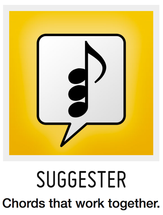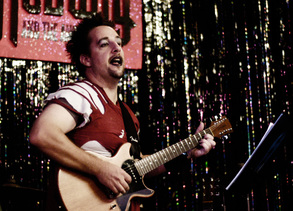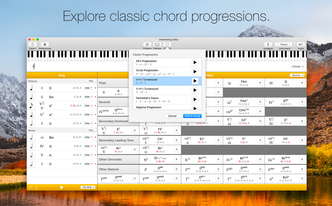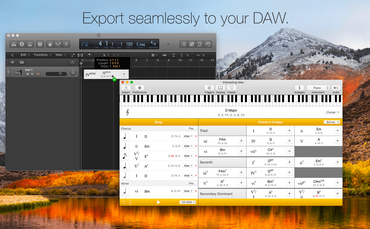 One of the biggest challenges I have when writing new songs is making sure I'm not simply recycling old ideas. It is easy to default to familiar chords and song structures. So, when I was introduced to the song creation app Suggester, my ears perked up! Here’s the intro description from the app developer, Mathieu Routhier: “Suggester is a tool to assist in the creation of songs and chord progressions. This app will help you find chords that work together. It is efficient and fun; use it to build musical phrases that will carry emotion through tension and release.” The beauty of the app is that you don’t have to understand music theory to use it. You simply select a key for your new song and the app suggests chords from that key that will sound good together. You can start with some classic chord progressions or build out your song from scratch. And, you can pick the chord “quality” (Major, Minor, 7th, etc.) for each chord based on additional recommendations from the app. This makes putting together a chord progression for your song simple and it gives you the flexibility to substitute chords to make for a more interesting progression that goes beyond the simple major and minor chord forms. A more interesting chord progression can inspire you to come up with new melodies to go with those fresh chords. When building a chord progression, you can simply click on a chord and hear what it sounds like. You can work in one of two ways – forward or backward.
For forward – Select your scale and create your song from recommendations the app suggests. For backward – Browse the app’s catalog and select a set of chords you like. The app will identify the scale that matches. This feature is handy if you want to play along. Once you’ve put together your progression, you can send it to a MIDI output or export your progression as a MIDI file and open it with your DAW (Digital Audio Workstation) software like GarageBand, Logic Pro X or Cubase. I highly recommend this app for easy and fast song creation! For a full list of Instruments, Scale Types and Chord Types on their website. The app is available for Mac OS, iPhone and iPad. It can be found on the developer’s website or from the Apple iTunes app store. (Be sure to check out his other apps too!)
4 Comments
 THE FOLLOWING IS A RECORDED INTERVIEW AND ANSWER TO THE ABOVE QUESTION: “Self expression. Adulation. Feedback. The applause. And not so much that but the acknowledgement of what I just did resonates with somebody and what I just did they enjoyed. And, it was worth it for them to listen to. Or, they liked it. So, getting that immediate response like, ‘Hey, you know, they LIKED that song. Or, they liked my performance of that song. And that kinda gets me excited to wanna do the NEXT song. And I think, like when we did that Irish festival. It was, that we had a captive audience… people were really into it. And, so they would get up and clap along or they would dance. And so, it was a very physical connection… and a visual connection. But, we’re all responding to the MUSIC. We’re all responding to what we’re listening to. And, we’re moving our bodies accordingly. So you can really see that… we’re all playing the same song together. We’re all listening to the same song together. I may be playing it but, you know, they’re playing it too. And I think that’s where I start to understand what other artists talk about the importance of audience participation and that’s not… it’s not us giving a concert to THEM, it’s us all participation and there’s no music without a listener. So, it’s not a one-way conversation. So it is kind of a conversation in that… I’m throwing it out there for my half of the conversation and they’re singing along or they’re dancing along. And that’s how they’re responding back. Or, they’re CHEERING. And THAT’S how they’re responding back. The other thing that feels really good about recording is when I just nailed the song. And, when I’m prepared and I really do the song well and I felt it. And it moves beyond the technical. To where you really… you almost do become like a vessel. (A) physical way to express the song. And when you’ve done that, a feeling of satisfaction. The feeling of… Like it was really worth it to learn that song, it was really worth it to share it. It felt good. Something… And then when you get that audience feedback then that’s sort of like validation. I like that I can actually get paid for doing something I love doing. ‘Cause then it doesn’t feel like work. And I’ve heard many musicians talk about that too and it’s good to actually experience that first hand. So… You know, at the time it didn’t seem like a lot of money. And, relatively speaking, maybe it isn’t. But, it kinda, in a way, wasn’t the point. It was really more about… you know… Almost like it was a BONUS. Because… it is something I would do if I WASN’T getting paid. Something I would do naturally because I NEED to do it. And if I can get paid, that’s icing on the cake. So much the better.” |
AuthorMusic loves Tommy Archives
May 2018
Categories
All
|



 RSS Feed
RSS Feed